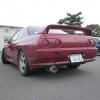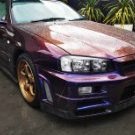Power Fc Or Nistune
Announcements
-
Similar Content
-
Latest Posts
-
By davemoto63 · Posted
Hey new to forum and about to pull the trigger on a Stagea.. I'll post up some pics and questions (I have many..) in another thread. Hope to hear from 4 door wagon owners for advice.. dave moto63 -
It'll only be as clunky as you are with the clutch pedal...
-
Beautiful day...but no time to do a proper update this morning.....
-
^ oh no how to edit, mistakes made. threw wrong ET there. with spacers its: Front: 19x8.5 ET23 - 235/35 Rear: 19x8.5 ET29 - 235/35






Recommended Posts
Create an account or sign in to comment
You need to be a member in order to leave a comment
Create an account
Sign up for a new account in our community. It's easy!
Register a new accountSign in
Already have an account? Sign in here.
Sign In Now